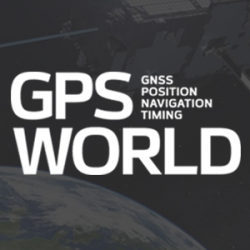
L-3 SAASM Innovation
September 7, 2012
By Tony Murfin. A new SAASM receiver with multiple key features is set to play a major role […]
Read More

By Tony Murfin. A new SAASM receiver with multiple key features is set to play a major role […]

While the FAA is moving ahead with plans for UAS/UAV to have regular access to U.S. airspace by 2015, a number of barriers remain. For UAVs to be treated like manned aircraft, their systems likely need to be qualified to the same standards as civil avioncs — this is a challenge, as each UAS has largely unique systems. UAS equipment standards are emerging, but threats to GNSS abound and defense/mitigation is required. The coming AUVSI convention in Las Vegas in August may provide some answers.

The world population will soon need more food than we can currently produce. This article discusses some interesting GNSS agricultural innovations that have the potential for productivity improvements. Hemisphere, Septentrio, Case New Holland, and John Deere are all actively engaged in finding solutions using GNSS and are all overcoming technology and implementation limitations with new innovative approaches.

Altus is a California-based business that has made an impact with innovative, high-performance products in a market that didn’t seem to have room for a new entrant. The technology, innovation, and product-marketing approaches that Altus has used appears to have made a real impact and provided a number of customers with a new outlook on their survey tools.
Altus is a California-based business that has made an impact with innovative, high-performance products in a market that didn’t seem to have room for a new entrant. The technology, innovation, and product-marketing approaches that Altus has used appears to have made a real impact and provided a number of customers with a new outlook on their survey tools.

Unmanned Aerial Vehicles (UAVs), or as they are becoming known Unmanned Aircraft/Aerial Systems (UAS), are in the news now almost every day. As UAV/UAS applications become more and more sophisticated, and operators seek to integrate them into commercial undertakings, the prospect of civil certification and unrestricted access to U.S. airspace is becoming a near-term possibility. This article discusses current UAV/UAS GNSS navigation capabilities and how this could change in the future.

As the GNSS world starts to appreciate the era of multiple global constellations, it’s probably worth considering the impact on aircraft navigation, GNSS airborne receivers and what these changes might soon bring to those who develop and use GNSS for airborne en-route navigation and approaches. Design and manufacture of new breeds of receivers are only the first of many steps along the road to full-fledged use of new capabilities. In aviation in particular, and in other high-precision fields to a lesser extent, many stages of study, regulation, development, test, and certification must be undertaken to eventually reach the promised land. The following capsule history of our progress to date also sheds light on what we may have to undertake in the future.

When I first heard of IFEN, it was a competitor on the EGNOS and Galileo programs that NovAtel was trying to get into. Each ITT (Intention To Tender) that our team in Calgary bid on, we were to be weighed against what IFEN or Septentrio had proposed. NovAtel did eventually capture its first study contract, and has now gone on to play a significant role on both programs, while a number of European GNSS start-ups have gone on to become contenders on the worldwide GNSS market. This article focuses on IFEN — a company that may be not well known in North America.

During the Institute of Navigation Satellite Division conference (ION GNSS 2011), I may have made a major mistake by being dragged kicking and screaming into the controversy that dominated its opening days. Excitement can be a relative term — if the sheer panic, and doom and gloom of what appears to be an impossible situation could be termed excitement. The dominating issue throughout the Tuesday CGSIC meeting, and in the conference rooms, corridors, and on the floor of the exhibition and technical conference later in the week, was clearly the LightSquared (LS) waiver situation.
© 2025 North Coast Media LLC, All Rights Reserved.

Follow Us